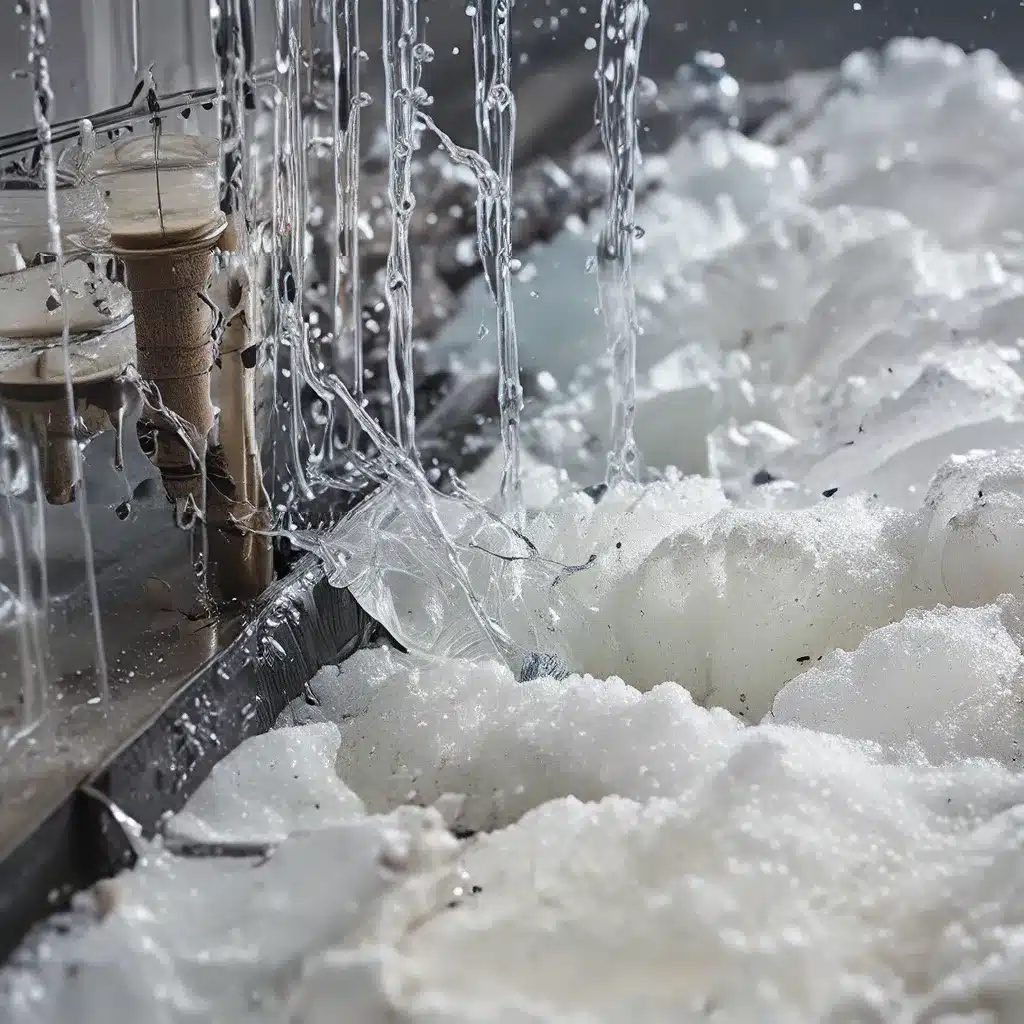
The Invisible Foes in Our Water
It’s a seemingly innocuous sight – a glass of cool, refreshing water. But what our eyes can’t see might just be the most insidious threat to our health. Hidden within this clear liquid could be a class of synthetic chemicals known as per- and polyfluoroalkyl substances, or PFAS.
These so-called “forever chemicals” have become a growing concern for communities across the United States. As the Biden-Harris Administration has recognized, PFAS exposure has been linked to a range of severe health problems, from cancer to liver and heart damage. And the kicker? These chemicals can persist in the environment for decades, making them an ever-present threat.
But fear not, my fellow water warriors! In this article, we’re going to dive deep into the cutting-edge techniques being used to tackle this PFAS crisis. From advanced filtration systems to innovative destruction methods, we’ll uncover the strategies that are helping communities across the country reclaim their right to clean, safe drinking water.
The PFAS Predicament: A Wicked Problem
First, let’s take a step back and understand the sheer scale of the PFAS challenge. These chemicals have been widely used in everything from firefighting foams to nonstick pans, and they’ve become ubiquitous in our environment. The EPA estimates that PFAS can now be found in the drinking water of over 100 million Americans. That’s a staggering statistic, and it highlights just how pervasive these contaminants have become.
But what makes PFAS so darn difficult to deal with? It’s their unique chemical structure. These compounds are made up of a long chain of carbon and fluorine atoms, which gives them incredible stability and resistance to degradation. Imagine trying to break apart a diamond – that’s the kind of challenge we’re up against when it comes to PFAS.
And the problem doesn’t stop there. These chemicals can also move easily through soil and groundwater, spreading contamination far and wide. It’s a wicked problem, indeed – one that requires innovative solutions and a dogged determination to overcome.
Strategies for Tackling PFAS: Filtration and Destruction
Faced with this daunting challenge, water treatment professionals and environmental scientists have been hard at work, developing a range of advanced techniques to remove PFAS from our water supplies. Let’s take a closer look at some of the most promising approaches:
Filtration Systems: The Cleanup Crew
One of the primary methods for PFAS removal is through advanced filtration systems. These specialized systems use a variety of materials, from activated carbon to ion exchange resins, to effectively trap and remove these pesky chemicals from the water.
Inland Waters, Inc., for example, has been at the forefront of developing high-performance filtration solutions for PFAS-contaminated water. Their state-of-the-art systems can remove up to 99.9% of PFAS, ensuring that communities have access to clean, safe drinking water.
But the real beauty of these filtration systems is their versatility. They can be customized to target specific PFAS compounds, ensuring that even the most stubborn of these chemicals are captured and removed. And with the Biden-Harris Administration’s commitment to providing $9 billion in dedicated funding to address PFAS and other emerging contaminants, more and more communities will have access to these life-saving technologies.
Destruction Methods: Saying Goodbye to PFAS for Good
But what about those PFAS that have already made their way into the environment? Enter the world of destruction methods – techniques that can actually break down and eliminate these persistent chemicals.
One promising approach is known as thermal destruction, where PFAS-contaminated materials are subjected to extremely high temperatures, often in the range of 1,000 to 1,500 degrees Celsius. At these scorching temperatures, the carbon-fluorine bonds that make PFAS so durable are essentially shattered, turning these “forever chemicals” into more benign compounds.
Another innovative method is electrochemical oxidation, which uses an electric current to induce chemical reactions that can destroy PFAS. This technology has been used successfully to treat PFAS-laden groundwater and wastewater, offering a promising solution for addressing environmental contamination.
The beauty of these destruction methods is that they don’t just move the problem around – they eliminate it altogether. By breaking down PFAS at the molecular level, we can ensure that these chemicals are no longer a threat to our water, soil, or air.
The Future of PFAS Removal: Collaboration and Innovation
As we continue to tackle the PFAS crisis, it’s clear that a multi-pronged approach is necessary. And the good news is that the Biden-Harris Administration, the EPA, and water treatment experts are all working together to drive progress.
The EPA’s PFAS Strategic Roadmap, for example, outlines a comprehensive plan to address these contaminants, including increased testing, data gathering, and the development of new regulatory standards. And with the historic $9 billion in funding from the Bipartisan Infrastructure Law, communities across the country will have the resources they need to tackle PFAS head-on.
But the real key to success will be the continued collaboration between researchers, policymakers, and water treatment professionals. By sharing best practices, exploring new technologies, and staying on the cutting edge of PFAS removal, we can ensure that every community has access to the clean, safe water they deserve.
So, my fellow water warriors, let’s raise a glass (of pure, PFAS-free water, of course) to the future. With innovation, determination, and a little bit of elbow grease, we can conquer these invisible foes and reclaim our rightful place as stewards of a healthy, sustainable water supply.


